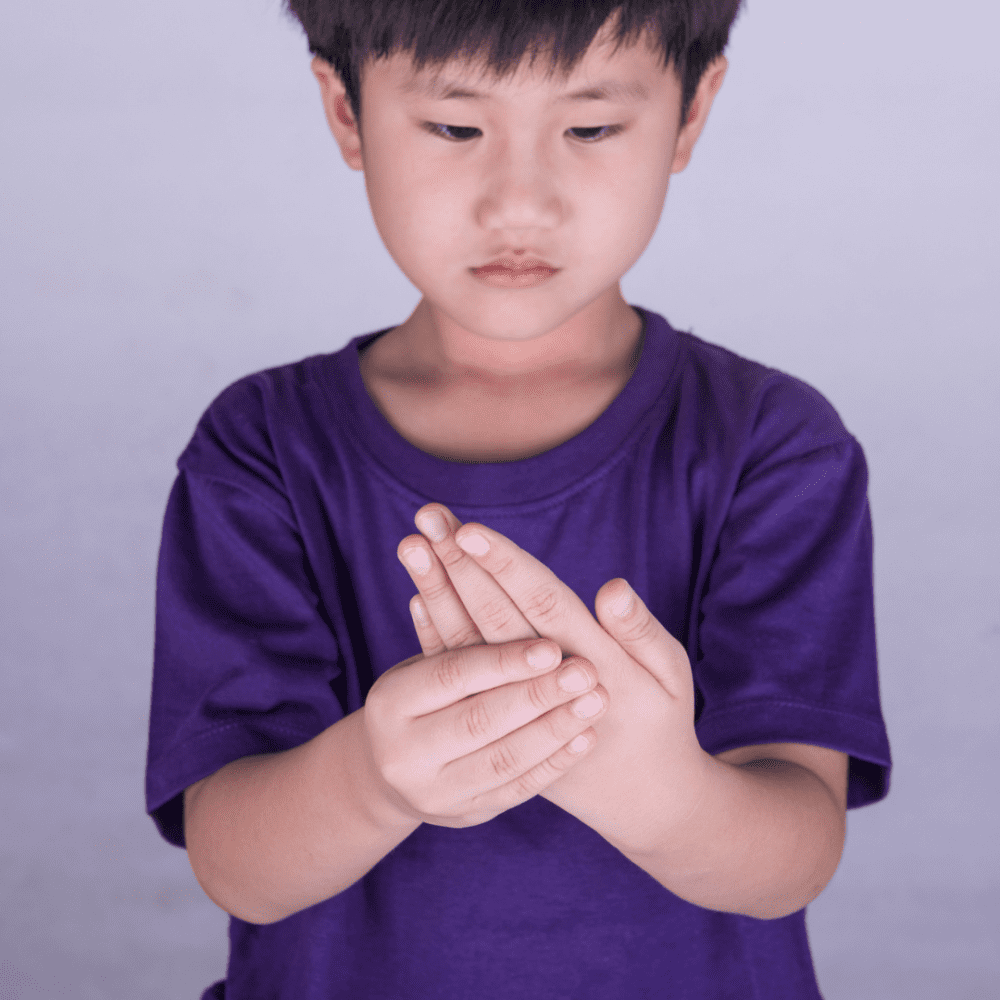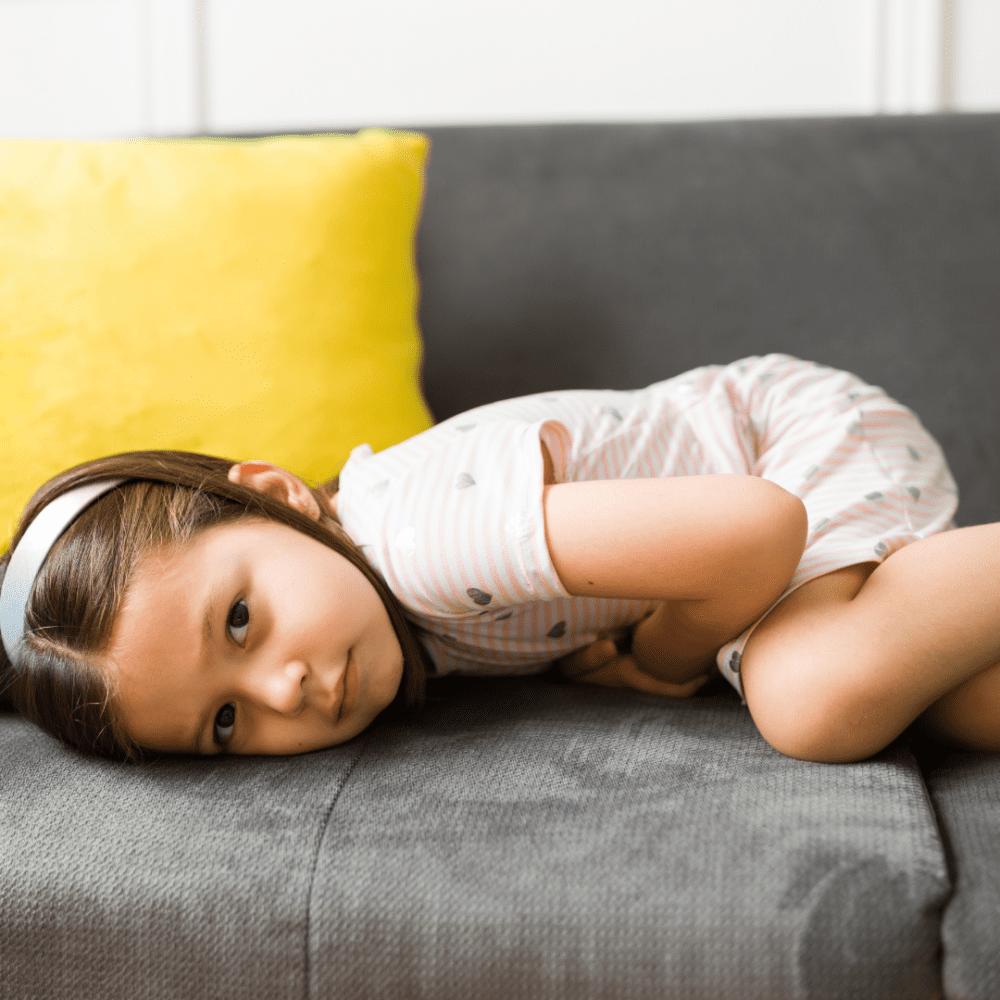
What is JIA?
Juvenile idiopathic arthritis (JIA) is the name given to a number of types of arthritis that occur in children. The name comes from:
Juvenile: referring to children under the age of sixteen years.
Idiopathic: meaning the cause is unknown.
Arthritis: conditions that cause joint pain and inflammation.

What are the symptoms?
Your child may have experienced one or more of these symptoms:
- joint pain, swelling, tenderness, stiffness, redness and warmth
- fatigue (tiredness and lack of energy), fevers, loss of appetite or weight, and generally feeling unwell
- skin rashes
- inflammation of the eyes (uveitis) and other organs of the body in some forms of the disease.
Any joint in the body may become inflamed but the joints most commonly affected are the knees, hips, hands and feet. Any number of joints might be affected from just one to several.
JIA symptoms can fluctuate – meaning they may vary from day to day, week to week. There will be times when symptoms are worse – these are called ‘flares’ – and then times when they are in remission.
The outlook for children with JIA is usually very positive. The good news is that most children with JIA will not have active symptoms by the time they become adults.
Who can help to manage my child’s JIA?
To achieve the best possible health outcomes, the management of your child’s JIA will involve a team effort over a long period of time. It is important that you and your child are at the centre of the care team, involved in all aspects of health management and decision making. This means having open, honest discussions with team members and asking any questions that you have along the way.
Depending on the child’s individual needs, the team may include:
Causes
-
Rheumatologist (paediatric rheumatologist if available)
-
Paediatrician
-
Rheumatology nurse (if available)
-
Physiotherapist
-
Occupational therapist (OT)
-
Ophthalmologist (specialist eye doctor)
-
Podiatrist
-
Orthotist
-
Dentist
-
Pharmacist
-
Child psychologists/Counsellors/ Play therapists/Social workers
-
Teachers and school support staff
-
Other family members – siblings, grandparents and carers.
Other Common Questions
There is no single test to diagnose JIA. Instead, it involves a number of steps. These may include:
- detailed health and medical histories of your child and their biologically related family members (where known)
- physical examination of affected joint/s
- laboratory tests e.g. blood tests (see next page)
- other tests such as X-rays, ultrasound and/or scans of the joints
- eye tests
The results of these tests will help in confirming a diagnosis of JIA, or rule out any other possible causes for the symptoms your child is experiencing.
Sometimes all of the test results will be normal. This does not necessarily mean your child does not have JIA – it just means that the tests will need to be repeated, possibly when your child has symptoms.
If your doctor suspects JIA, your child should be referred to a rheumatologist (ideally a paediatric rheumatologist who specialises in children with arthritis) who would confirm the diagnosis and start treatment.
Reaching a diagnosis can take time due to the fluctuating nature of the condition. The ‘waiting period’ can be a very anxious and frustrating time. These feelings are understandable, but it is important to keep on with the process until the diagnosis is made. Once JIA is diagnosed, your child can be started on treatment to manage symptoms and to reduce potential damage.
Every child’s JIA is different and responds differently to treatment. It is very difficult to predict how long JIA will last, its severity or how often it might swing between being almost symptom-free to quite disabling.
The treatments for JIA are constantly improving and the good news is that many children with JIA who receive early diagnosis and good treatment, both during and between flares, will grow up without any lasting effects of their arthritis.
There is still not cure for JIA but many children go into remission, meaning symptoms disappear for long periods, sometimes forever. For some, JIA can cause longer-term problems, especially if they do not receive early diagnosis and treatment.
There are many different treatments available for JIA. What works for one child may not work for another and finding the right treatment for your child can involve a process of trial and error. While this can be frustrating for all involved, it is important that you stick with the process to ensure that your child gets the best possible treatment for their particular type of arthritis.
The overall treatments used for JIA aim to:
- prevent or slow damage to joints and/or progression of the illness
- reduce symptoms including inflammation, stiffness and pain
- assist your child’s normal growth and development, and ensure that they are able to get back to their usual activities and lead the most normal life possible.
Medicines will play a major role in the management of JIA. As a parent you may feel anxious about the prospect of your child taking these medicines. This is natural and understandable but they are very necessary for the best long-term outcomes for your child. It is important that you have the opportunity to discuss any worries or questions that you have about the medicines with the prescribing doctor.
See Medicines for more information.
Pain is a very common symptom of JIA, even when children are on therapies that are effectively treating their underlying condition.
High levels of pain can result in children with JIA being less physically active and may reduce their participation in school, social and family activities.
It can also result in sleep disruption and poor sleep quality, which in turn can cause daytime fatigue, reduced mood and increased sensitivity to pain, essentially creating an ongoing pain cycle.
A range of interventions, including medicines, use of hot and cold treatments, relaxation and distraction techniques, deep breathing, massage, gentle stretching and exercise can assist in relieving pain.
Members of the JIA healthcare team can offer suggestions and interventions that actively address your child’s pain. A comprehensive, multidisciplinary approach will provide you and your child with techniques and skills aimed at limiting the impact of pain on your child’s physical and psychological health and their social and educational development.
Downloads
Finding out your child has arthritis
Arthritis is a condition that doesn’t discriminate. One child in every 1,000 in Australia is diagnosed with juvenile arthritis.
Juvenile arthritis Info Sheet
This booklet has been written for parents, families and carers of children with arthritis.



